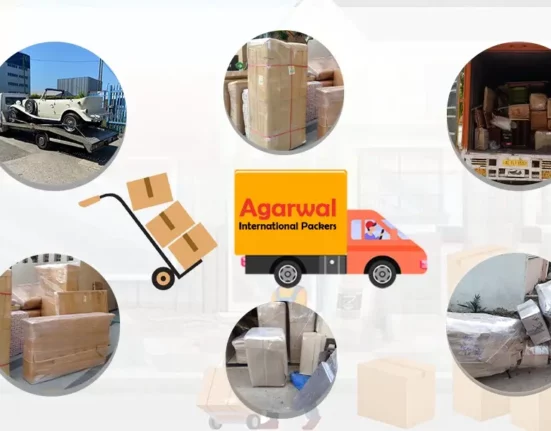Nowadays; the majority of companies depend on genuine and effective supply chains to respond to clients’ needs and wants, and survive competitively. Express delivery services have become an important part of this process, offering reliability.
Real-time tracking is now the key element in improving supply chain visibility, allowing customers to monitor logistics operations and make proper decisions fast.
What is Supply Chain Visibility and Real-Time Tracking?
Supply chain visibility is the power of a company to track and manage the elements present in its chain. It includes every detail starting from sourcing the raw materials to delivery of the products to the consumers. SCV enables companies to track the products at any given time and make changes if necessary.
Real-time tracking is a method of continuously observing the position and condition of items like products shipments or even vehicles and delivering this information to the firms at hand. This form of time monitoring is crucial for express deliveries where every second counts. Technologies such as GPS, sensors, Internet of Things (IoT) devices, and cloud-based software platforms make it possible for instant updates ensuring timely express delivery.
How Can You Increase the Visibility of Supply Chains?
There are different ways in which increasing visibility can be a challenge but it still must be pursued if these companies want to run efficiently and meet customer demand. The following strategies should help improve SCV visibility in the case of urgent deliveries.
- Technological Solutions: Business Management Programs such as Enterprise Resource Planning (ERP), Warehouse Management Systems (WMS), and Transport Management Systems (TMS) may help businesses manage formal and informal deliveries alike by ensuring that they have an overall picture of their entire supply chain from beginning until to the end. This is done through real-time interactions over product movements or stock levels as well as sometimes (but not limited to) also taking into account clients’ demands.
- IoT & Sensor Technology: Real-time tracking is revolutionized by using IoT devices and sensors. They can be placed on items, cars, and freight containers so that their position as well as particular status might keep getting followed. This technology plays a vital role especially in express delivery services since the timely delivery of packages depends on knowing the precise places where they are located.
- Cloud-Based Solutions: This allows stakeholders, including suppliers, manufacturers, and retailers to access real-time information from any place in their comfort. This makes it easier to manage and ensures every party involved in the process is on the same page.
- Collaboration with Supply Chian Partners: The chain of supplies includes many players like suppliers, manufacturers, and logistic providers. Therefore, there must be smooth communication and flow of information among these partners for better visibility. Collaborative platforms enable better sharing of data for example during express deliveries where precision is critical.
- Adopt Advanced Analytics: Through historical analysis and prediction of future trends, advanced data analytics provide greater insights into the performance of the supply chain. Predictive analytics can identify potential disruptions hence enabling companies to take preventive measures that improve the visibility enabling timely express deliveries.
Why is Real-Time Data Important in Supply Chain Management?
Real-time data is exceedingly vital in the management of supply chains, especially for express delivery for many reasons:
- Faster Decision-Making: When firms have access to real-time data, they can rapidly assess the problem and make informed decisions. For instance, if a shipment is delayed because of weather conditions, the logistics team can use real-time data to reroute shipments or notify customers about delays immediately; this is critical for time-sensitive express delivery.
- Reduced Delays and Disruptions: Transportation delays, supplier issues, or even natural disasters are some of the many disruptions that supply chains are susceptible to. With real-time information, firms can identify potential problems when they happen and develop strategies on how to address them. This becomes very important in the case of express deliveries which have limited deadlines.
- Improved Inventory Management: Accurate inventory level tracking is guaranteed by real-time data thus helping companies avoid overstocking/understocking situations. It is highly required especially across industries with rapidly changing demand such as retail or e-commerce where there’s often a high volume of express deliveries being made.
- Improved Customer Experience: Live monitoring allows organizations to provide precise shipping notifications to clients, which is essential for fast shipping services. This openness fosters trust and improves client satisfaction. There is a growing demand from customers that they be informed of their orders’ current states; this makes it possible through instant tracking systems especially for emergency items.
- Enhanced Risk Management: Various issues including political occurrences, financial changes, and natural calamities pose threats to supply chain management operations. With up-to-date information at hand therefore helps firms predict as well as deal with such threats thus circumventing any undue delays associated with express deliveries.
What Role Does Real-Time Data Play in Enhancing Supply Chain Visibility?
One of the most important factors of SCV is real-time visibility. Without these updates, businesses would not know their operation status leading to potential business loss. Here are a few ways in which real-time data improves supply chain visibility.
- End-to-End Transparency: The entire journey of a product can be traced—right from raw materials acquisition through to final delivery—thanks to real-time data that companies are working with today. As such, it reveals inefficiencies and allows monitoring and making decisions based on facts to improve supply chains thus guaranteeing efficient express deliveries.
- Improved Responsiveness: With real-time insight into supply chain operations organizations can respond to any change or even disruption right away. Whether we are talking about a delay at a shipping port or soaring demand for certain items on stores’ shelves; having access to contact data helps businesses act before things go out of control. This is crucial when it comes to keeping express deliveries on schedule.
- Timely Issue Resolution: Businesses can identify issues before they escalate into major problems using real-time information. For instance, companies can use real-time tracking to redirect shipments or find other sources of supply in case of delays or misplacement of shipments. Hence, this proactive strategy assists in ensuring the timely delivery of parcels.
- Predictive Analytics Based on Information: The combination of real-time data and predictive analytics offers meaningful information about the possible behavior of a supply chain in the future. Using this approach enables organizations to spot trends, predict demand, and improve their supply chain processes for better efficiency thus making sure that express shipments are handled smoothly.
- Resource Allocation Optimization: This is made possible by real-time data that enables organizations to allocate labor, equipment, and transport resources more effectively. Companies can modulate their operations through up-to-the-minute supply chain condition scrutiny so that they optimize resource utilization, and minimize waste and costs while at the same time ensuring timely delivery of express shipments.
Final Thoughts
In this competitive market, real-time tracking and SCV are mandatory for success mainly for companies that provide express delivery services. Adopting the techniques listed above logistics businesses can improve their visibility and improve efficiency in supply chains.
Real-time tracking will remain a vital aspect of modern supply chain management. Investing in SCV will ultimately result in smoother operations for every business. By integrating it companies will stay ahead of the curve creating a more agile and resilient supply chain that delivers on its promises.





